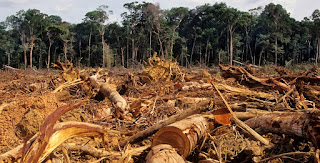Now that most of the world is on the descending side of the virus curve, economists have started evaluating the pandemic actions. Were the lockdowns really worth it? Was saving lives more important than saving economies? The latest Economist opens up the debate lives versus livelihoods by citing dozens of papers published during the pandemic.
*****
For most people from Bill Gates to a man on the
street, the question was a no-brainer. The economy can bounce back; a life gone
can’t be revived. Human life is priceless, said politicians before announcing
total shutdowns.
Supporters of lockdowns claimed people were so scared
they would have shut themselves anyway. If at your office or factory, colleagues
were reporting ill every day or falling dead; would you be keen to continue
working? Before the vaccines, a lockdown was the only preventive tool
available, they said.
Opponents said lockdowns destroyed livelihoods,
without controlling the virus spread. Officially four million people have died,
and in reality perhaps 10-20 million. Many nations suffered heavy tolls despite
strict lockdowns. Children in many countries will probably miss in-person
classes over three academic years.
*****
Let me ask a hypothetical question. If covid-19 was
known to be dangerous exclusively for people aged 100 and above, would the
world have taken any action? Probably not. There are about half a million
centenarians alive, and they have so few years left, it is not worth shutting
down anything, or even investing heavily in vaccines. Evidently we are willing
to sacrifice 100+ year olds (unless we are one ourselves).
Here, I would like to discuss two concepts mentioned
in the Economist article. One is VSL (Value of Statistical Life).
Economists must keep aside emotions, and ruthlessly
put a value on a human life. I will offer an example where we subconsciously attach
some kind of a monetary value to our own life. A family of four is planning to go
on vacation. A ticket on Qantas, Lufthansa or Singapore Airlines is $1000 more
expensive than say on Malaysian airlines, Ethiopian airlines or Asiana
airlines. The head of the family decides to buy the cheaper tickets and save
$4000. By opting for a less safe (actual or perceived) airline, the family has
put a lower value on their lives.
The American regulatory agencies consider the value of
an American life to be $11 million (VSL). The VSL concept helps policy makers conduct
the cost-benefit analysis. For example, USA can invest $11 trillion as stimulus
to save 1 million American lives. The underlying assumption is that those one
million Americans will be able to recover that amount by their future contribution
to the GDP.
The downside of VSL is that it doesn’t differentiate
between young and old. QALY (Value of a
Quality Adjusted Life Year) is a better measure.
In 2008, Stanford economists had calculated $129,000
as the QALY for someone on kidney dialysis. Meaning, each $129,000 spent would
add a year to the dialysis patient’s life. Once this was known, the insurance
company and the state could decide whether to offer the treatment and at what
cost.
For the Covid-19 pandemic, Britain has decided the
QALY to be GBP 30,000 per annum. In other words, if covid death is going to
take away ten years from someone’s life, the value of that saved life is GBP
30,000x 10= GBP 300,000 ($417,000).
*****
There is no official data about the value of human
life. One good measure is to see how much a nation pays if its soldier dies in
a war. USA pays $500,000 to the families of soldiers dying in Iraq or
Afghanistan, $100,000 to those in other combats. India pays $40,000.
It should be evident that poor countries have a lower
VSL. The lockdowns (statistically) become worthwhile for rich nations, because
they place a higher value on the lives of their citizens. Every life saved
offers a greater economic benefit.
*****
It is easier for economists to do these ruthless cost-benefit
analyses. A lot more difficult for those who govern. However, since the
pandemic is still on, governments would do well to conduct the trade-off
exercise. It can improve their decision-making.
Ravi









